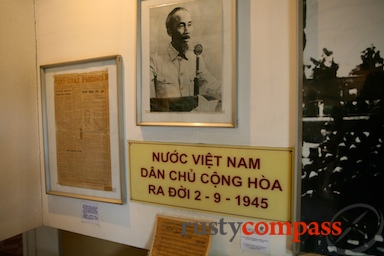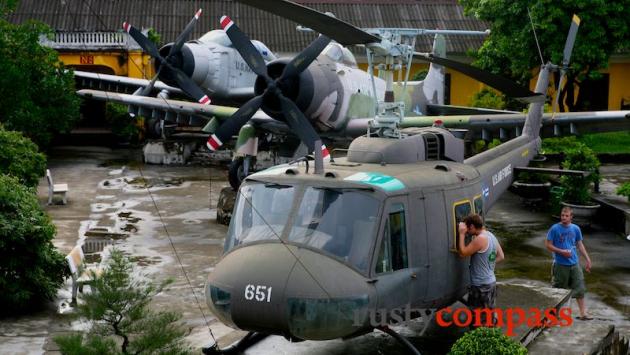Vietnam has plenty of war museums - they're as ubiquitous as Ho Chi Minh museums. The most important of them is, unsurprisingly, located here in Hanoi. The Military History Museum pits the relatively simple armoury of Vietnam's victorious Communists against the more sophisticated but ultimately failed weaponry deployed by the French and the Americans.
Prized pieces include tank 843 - the tank that famously smashed through the gates of Saigon's Presidential Palace on 30 April 1975 marking the end of the Vietnam War (we are reliably advised that this one is the real deal and the one found in the grounds of the former Presidential Palace in Saigon is a replica) and the wreckage of an American B-52 bomber set amidst assorted US military junk.
 Photo: Mark BowyerHo Chi Minh's declaration of independence in 1945. Three decades of struggle followed.
Photo: Mark BowyerHo Chi Minh's declaration of independence in 1945. Three decades of struggle followed.Other displays of interest include classic propaganda videos, a diorama of the Battle of Dien Bien Phu and a multitude of small arms, improvised weapons and low tech logistical support pieces - like bicycles - used to great effect against both the French and the Americans.
The museum is well worth visiting but is as remarkable for its shortcomings as its collection. It seems a modest and shallow account of a military whose campaigns changed the twentieth century and humbled a superpower. There is no shortage of expected triumphalism but some of the deeper contours of Vietnam's three decades of war are disappointingly left untouched.
 Photo: Mark BowyerCot Co Tower - one of the remains of Hanoi's citadel. Much of the citadlel was demolished by the French
Photo: Mark BowyerCot Co Tower - one of the remains of Hanoi's citadel. Much of the citadlel was demolished by the FrenchThe museum is overlooked by the Cot Co tower - one of the few remnants of Hanoi's Royal Citadel. This structure was built at the beginning of the nineteenth century by Emperor Gia Long. It was later modified by the French and used as a watchtower. Travellers to the museum have limited access to the tower.







There are no comments yet.